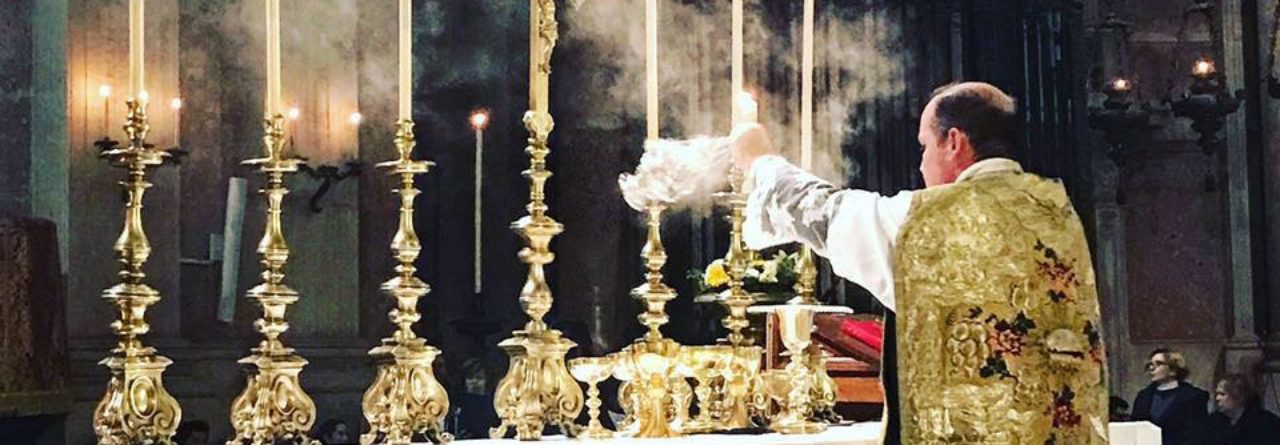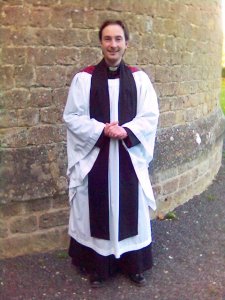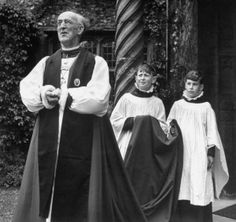This is a somewhat lighthearted look at what Anglican clergy wear in church. It is particularly for those who want a field guide to spotting Church of England clergy, but may work elsewhere in the Anglican Communion, albeit the C of E is far broader (in a few dimensions) than most other Anglican churches. Here are the five rough categories of Anglican dress-up
Reformed tradition
This is the form of vesture that was eventually created for the Church of England after the Reformation: cassock (double-breasted of course), surplice, hood and scarf are the main ingredients. This tradition remains strong amongst conservative evangelicals and old low-church traditionalists. Its centuries as the official vesture of clergy make this the top trump of Anglican style: never wrong for any liturgical occasion, in spite of what the invite might say. If you’re really lucky, an adherent to this style might preach in gown and bands. Wigs, unfortunately, are now uncommon.
Liberal tradition
This takes its cue from Vatican II and 20th-century moves to liberalise and simplify vesture: cassock-alb and stole are the main ingredients (the bare minimum to satisfy canon law). This is the vesture of the lead character in Rev, and is now the norm in middle-of-the-road Anglicanism. The cassock-alb is like the liturgical equivalent of Ugg Boots. While it is possible for the cassock-alb to be simple, unfussy, it is far too easy for things to go pear-shaped — an oatmeal polyester pear. Stoles and scarves (whatever the difference might be!) make use of nice, often personalised, embroidery. Whenever two or more clerics of this persuasion meet there will inevitably be a colour clash, often enough to turn sensitive Anglo-Catholics low church.
Abolitionist tradition
The reformed and liberal traditions did not go far enough for some for whom even a clerical collar is dressing up: no vestments is the idea. This tradition is most popular among charismatic evangelicals. Even here there is a spectrum of fashion: those who wear a suit because they mean business, and those who wear jeans because they want to be down with the kids. Of course, not wearing vestments is as much as a statement as wearing them, and draws attention to and even clericalizes what is worn instead (as the blue suit and tie has become in some protestant churches). Celebrating main Sunday services regularly in this manner is a flagrant breach of canon law, but the bishop will try not to notice.
Sarum tradition
The liturgical ‘archaeology’ of the late 19th and early 20th centuries, led Percy Dearmer, among others, to seek and revive a distinctively English pre-Reformation vesture, particularly from the Sarum liturgy books. The point was to look Catholic without looking Roman: a way of being high church without the wholesale adoption of Roman fashions. The thoroughgoing version of this tradition is all but extinct: there are very few who use one of the reinvented Sarum liturgical colour schemes (brick red, blue, yellow?) or consider resurrecting the almuce (fur is not an ethical look). Yet its mixture of dignified, simple catholic vestments at mass (mostly now from the Roman tradition than any real attempt to recreate Sarum norms) alongside the seriously Anglican surplice and scarf at offices (the reformed style) meets some refined expectations, and it has become the standard Anglican compromise in many of the big establishment churches, like cathedrals, major churches and Oxbridge chapels. Anything too Roman is rejected: lace, birettas, skullcaps and cottas. Anything too liberal is likewise rejected: cassock-albs, polyester, communion without a chasuble.
Roman tradition
Perhaps because the Roman Church sets out its rules on vesture with such detail it is attractive to Anglo-Catholics: cassocks, albs, chasubles and cottas are the order here. In many ways, the late 19th and 20th centuries have seen much of this tradition become mainstream in the church: particularly noticeable is the use of Roman liturgical colours. One might say that the liberal and Sarum traditions above are simply Roman style repackaged for Anglican sensibilities. Lace and birettas are the





